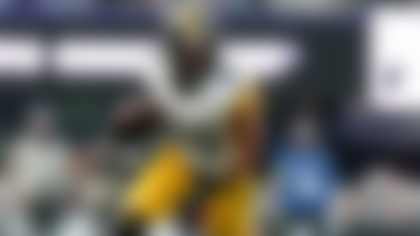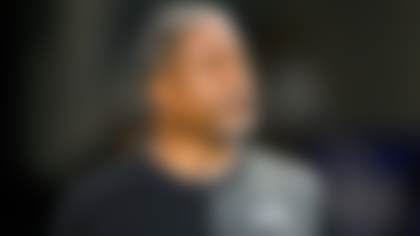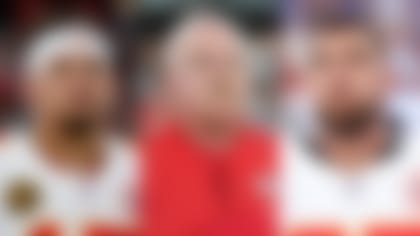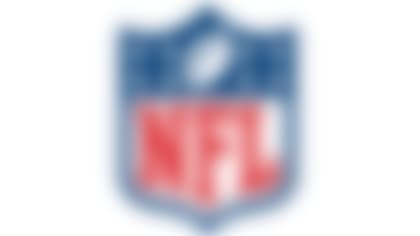I spent most of Tuesday talking with NFL players and coaches who are dealing with the task of rebounding from a shutout loss in Week 10 (Vikings and 49ers) or reacting to a rematch game they just had and the new NFL memo warning teams that ejections are a possibility for flagrant helmet-to-helmet contact.
The NFL game is like no other brand of football played. Shutouts have a much different affect at this level on losing teams than you might imagine. Rematch games are a lot tougher on teams that won the first game than you might imagine. And coaches and players wonder if there is a better way to handle the dangerous helmet-to-helmet collisions that need to be reduced.
The shutout effect
Is there any lower feeling for an NFL player and coach than to be shut out by an opponent? It doesn't get much worse than when a 53-man roster with close to $100 million in salaries can't cross the goal line once in 60 minutes of action. This has been a fairly quiet year for shutouts, with three so far as compared to 14 in 2006. I went back to 2002 and looked at all the shutouts in the NFL. In the last 1,424 regular-season games, there have been 35 shutouts, or 2 percent of all the games.
Early this season, the Seahawks were blanked by the Steelers 21-0, and until this past weekend, every other team found a way to score points. Week 10 saw the Niners get shut out by the Seahawks on Monday Night Football and the Vikings get blanked by the Packers. The question is what happens to teams the week after a shutout? As Vikings coach Brad Childress said to me, "In NFL football, the worst performances can be followed by the best performance."
Might sound like coach talk to some, but Childress may have a point. Last year, the New York Jets and 49ers both lost a game 41-0 and won the next week. The Bengals bounced back from a 30-0 beating and won, and the Steelers got blanked 27-0 and defeated the next opponent.
In the last six seasons, the league's worst shutout was a 49-0 loss by Arizona to Kansas City in Week 10 of the 2002 season. The Cardinals pulled it together seven days later and beat Detroit 23-20. Of the 32 teams shut out from 2002-06, the record the following week is 16-16. In the past six seasons, 22 of the league's 32 teams have experienced the bad side of a shutout at least once, and now the Vikings and 49ers have at least a good chance of bouncing back. Don't be shocked to see either team win this week, and by the way, no team in the last six years has been shut out twice in a row.
The rematch effect
Last week I wrote about the big rematch weekend we had for Week 10. Eight games represented the second in a home-and-home division series. I mentioned that not a single team went 6-0 in its division last year, meaning rematches are tough to win. The Colts were the best example of this in 2006. Despite going on to become the world champions, they lost all three divisional rematch games in the regular season.
In Week 10, we nearly saw half of the rematch games go to the team that lost the opening round, and the Cleveland Browns played much better than they did in their opening-day, 34-7 defeat to Pittsburgh. On Sunday, the Steelers had to rally with 22 second-half points to catch the Browns, 31-28.
Interestingly, the three teams to win their rematch game in Week 10 and split the season series did it on the road. Jacksonville, Atlanta and Philadelphia all lost their opening game at home and came back and beat Tennessee, Carolina and Washington, respectively.
I talked with players from those rematch games and asked them to shed some light on why rematch games are so hard to win. The Redskin players said the Eagles made adjustments to their defense from the first matchup and played their linebackers much closer to the line of scrimmage, making it tough to get any double-teams at the point of attack. The Titan players said the Jags made a concerted effort to shut down their running game after giving up a franchise record for rushing yardage the first time. I might add that Jacksonville had to play the second game without their All-Pro defensive tackle Marcus Stroud as well as their starting quarterback, David Garrard. Atlanta split with the Panthers last year and they did it again this year.
Keep in mind we have only had 11 rematch games this season so far, leaving 37 to go. Sweeps are ahead of splits, 8-3, but I expect things to balance out in the next few weeks and so do all the players who lost the first game of the two-game series with their division opponents. I'm sure Chiefs DE Jared Allen can't wait to play the Broncos again after Sunday's showing.
Helmet-to-helmet
The NFL sent out a memo to all clubs last week stating that officials could start ejecting players from games if they determined that any helmet-to-helmet contact was intentional. Former Steelers coach Bill Cowher said he struggled with giving officials that kind of power, so I asked as many head coaches as possible how they felt about getting a player ejected for this foul.
Most believe it will not be called very often and will act more as a warning to all players, especially those on defense. Most coaches would rather see the player suspended for the following game rather than ejected from the game he is in, and these are the reasons voiced to me this week:
» "It's hard enough with a 45-man roster to handle all situations that come up in a game. What if we lose a safety in the first quarter followed by a defensive back injury in the second quarter. We may not be able to match up with a team that goes to four wide receivers."
» "Often what we see on the field is a little different when it is reviewed early the next week, and we would hate to see a mistake made when the suspension the next week would have made more sense."
» "Why ask the officials to figure out one more gray area in a football game."
» "Any safety precaution we can take is good, but too many times it's hard to tell if a defender is trying to dislodge a football from a ball carrier or trying to hurt an opponent. Can the official really tell what the intent was?"
» "Of course, this is another way to protect offensive players and nothing is done to protect defensive players from cut blocks and other dangerous techniques down in the trenches."
» "I saw the three plays used as examples, and only one of them looked beyond a shadow of doubt what the intent was. The other two happen all the time in NFL games."
After listening to coaches and players on this subject I get the feeling they don't like the idea, but most feel it will be rarely called, if at all. Time will tell, but as one former head coach said, "You really have a hard time legislating safety; it's a very physical contact sport."



